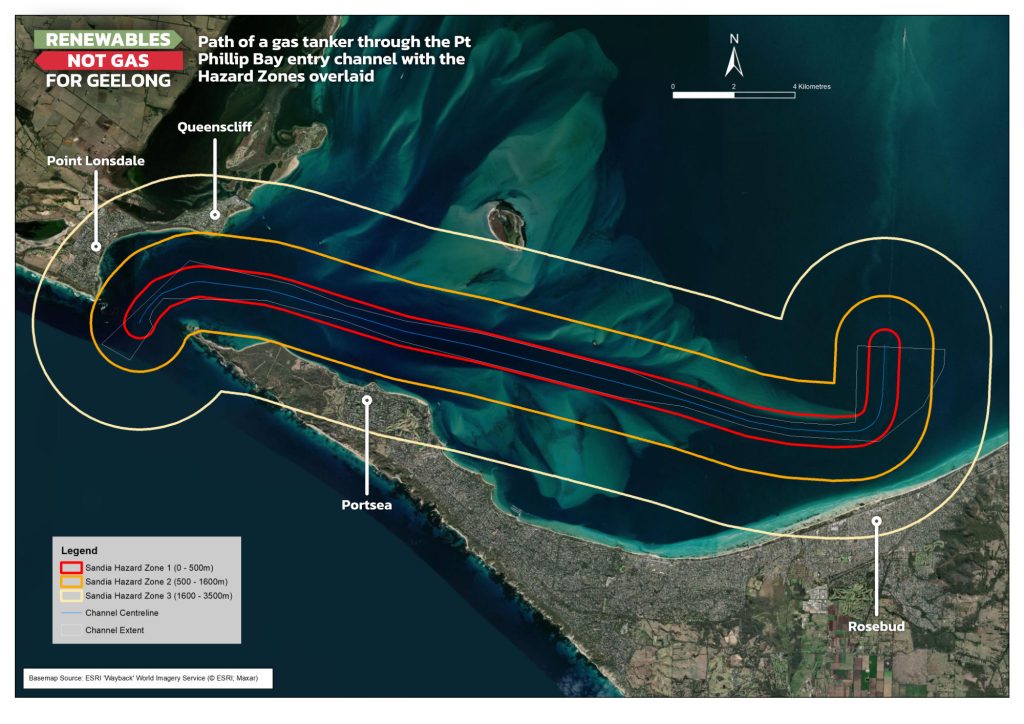ACF Community Geelong has released a video highlighting the dangers posed by the transport of liquified natural gas (LNG) to more than 8000 residents on the Mornington and Bellarine peninsulas if a floating gas terminal proposed for Geelong goes ahead.
Geelong Renewables Not Gas, the campaign being run by ACF Community Geelong, is concerned about possible safety and security risks associated with potential incidents during the passage of the LNG tankers through Port Philip Heads to the proposed floating gas terminal in Corio Bay.
Studies conducted on behalf of the United States Government have shown that an incident with an LNG tanker such as a grounding, collision or deliberate attack can impact on residents within a 3.5 km radius.
Mapping analysis using Census data estimates that 5055 people living at Portsea, Sorrento and Rosebud and a further 3827 in Queenscliffe and Point Lonsdale residents live within a 3.5km radius of the Port Philip Heads through which LNG tankers would pass.
ACF Community Geelong organiser Sally Fisher said the mapping analysis and video showed clearly “that a picture is worth a thousand words because it enabled people to see exactly the shipping lanes and proposed gas terminal in relation to where they live or work.”
“Best practice is to keep LNG shipping and terminal facilities remotely from public and residential areas. No other LNG facility in Australia is located within 3.5kms of residential areas. If the project is allowed to proceed, the LNG tankers would be simply too close to public and residential areas,” she explained.
The video also shows how up to 30,000 people living close to the proposed Geelong site or the Corio Bay shipping channel would be at risk of death or serious injury in the event of an accident or a deliberate terrorist act.
Ms Fisher explained that LNG is transported at very low temperatures, minus 160 degrees (C), and if there is an incident with the ship and a cargo tank is breached, a large diameter LNG pool may form on top of the water.
An asphyxiating flammable vapour cloud will drift downwind of the spill up to 2.5 km. If the drifting gas ignites, a large pool fire will result, and people are at risk of serious burns up to 3.5kms away from LNG spill.
“We know that residents and businesses are concerned about this proposal and the potential danger from an incident involving LNG. These are serious issues and need to be addressed by Viva Energy.” said Ms Fisher.
The video can be viewed below
Maps of Hazards zones associated with LNG transport and the proposed gas terminal can also be found below



